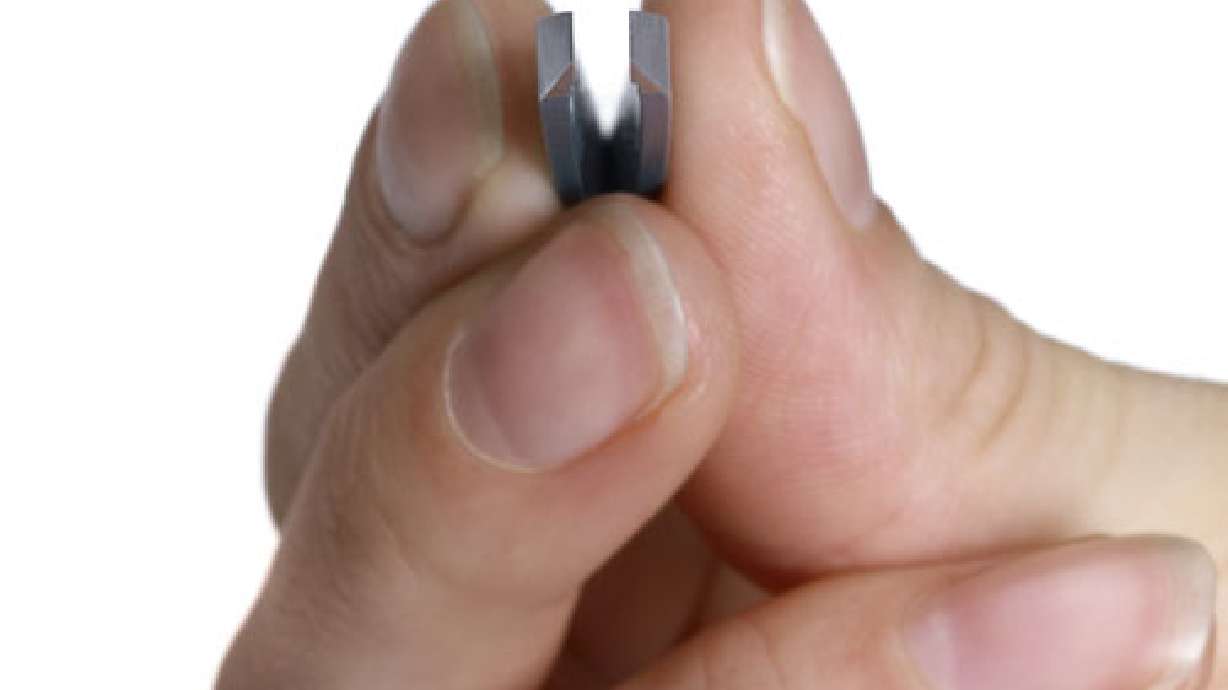Estimated read time: 3-4 minutes
This archived news story is available only for your personal, non-commercial use. Information in the story may be outdated or superseded by additional information. Reading or replaying the story in its archived form does not constitute a republication of the story.
SALT LAKE CITY — Slivers are common among people who work with wood or metal, as well as for mothers of small children. Still, they can be very difficult to remove.
Slivers are defined as slender pieces of material cut, split or broken off the main part; a splinter. They come from all sorts of items we work with: glass, plastic, hair, etc. The most common slivers, however, are wood and metal.

Wood slivers are very hard to remove if not detected early because they swell with the tissue and cannot be seen on X-ray. If you do not remove the entire splinter, you will get an infection and it will have to be removed.
Metal splinters are easier to remove because you can see them on X-ray and your body will, on occasions, accept the metal without getting infected.
Hair slivers aren't quite as common as wood and metal, but hairdressers or pet groomers often get them. Because hair is so fine, hair slivers are very painful and hard to detect.
How do you remove slivers? Pretty much anything goes. Some people get a sharp needle or pin and dig it out, some find it too painful or too deep to remove and seek medical help to remove the sliver.
Here is a quick tip to remove slivers at home:
MORE:
- If the splinter is extremely painful, rub a bit of Baby Orajel around the affected area and wait a few minutes before trying to remove it. Wash the spot with soap and water and dry it. You don't want the skin (or the splinter, if it's wood) to get soggy.
- Inspect closely. You may need to magnify the area to see a small sliver. The size of the splinter and how it's angled in your skin will help you know the best way to take it out. Pull the sliver out the same way it went into the skin.
- For deep slivers, make a paste using water and about one-fourth teaspoon of baking soda. Put the paste on a bandage and apply the bandage to the affected area. After 24 hours, remove the bandage. The splinter may be sticking out of the skin. If it's visible, pick it off with tweezers. Repeat the method with new paste and another bandage every 24 hours until the splinter is gone.
- Alternative treatment: Lightly apply white glue in a thin layer to the affected area. Allow to dry. Peel the glue off for the hopefully easy removal of the small splinters. Glue conforms and gets into nooks better than tape.
If all your efforts fail and you choose to seek medical help, please remember removing the splinter is not an emergency unless the object is in the eye. Whatever way you choose, it is always better to remove the sliver.
Suzanne Carlile, "Nurse Suzy," has been a nurse since 1982. Her main focus is critical care and nursing education. She holds a master's degree in nursing, is a Certified Emergency Nurse, and a member of NNSDO Intermountain West Chapter.









